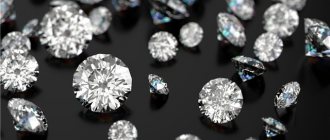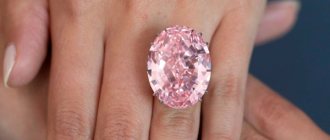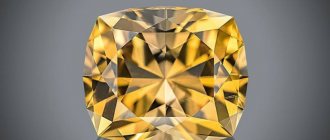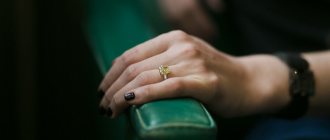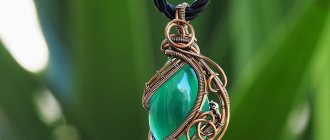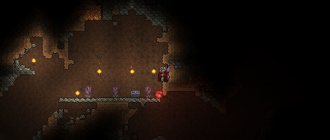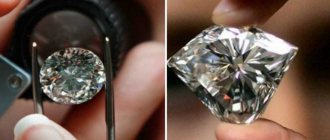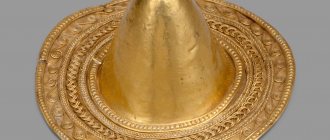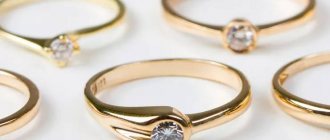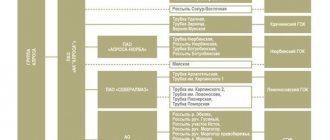HOW TO RECOGNIZE A GOOD DIAMOND
According to Forbes, Russia is the world leader in diamond production. However, there is a paradox: gems on the Russian market are often found to be of poor quality and cost 2-3 times more than in European countries. Therefore, in order to choose the right diamonds in the CIS countries, you need to arm yourself with specific measurable characteristics, and not just “get caught up in marketing.”
Which diamonds are best to buy?
- Colored diamonds (red, pink, orange, purple, blue, blue, green) are often more expensive than colorless ones.
- The rule here is: the rarer a particular specimen is found in nature, the higher its value.
- Quality criteria are published weekly by Rappaport's professional price list and include: weight, color, clarity and cut.
- A profitable purchase of a small diamond will bring up to 10% per annum, and a large diamond will bring up to 15% per annum.
Where is the best place to buy diamonds?
Real diamonds are sold wholesale at international auctions and then end up with resellers. Sales agents inflate prices as they please. Therefore, it is best to buy diamonds from official dealers who have access to auctions. There are only a dozen such companies in Russia, and you can find them, for example, on the website Rostender.info.
Adamantine shopping tour to Africa
However, the online magazine Maxpark believes that it is more profitable to go on an adamantium shopping tour to Africa or Namibia: there, a high-quality stone will cost only $300, and you can choose a frame “without leaving the checkout.”
Interesting fact: Russian mining with state participation produces almost a third of the world's diamonds.
Diamond quality: what should you consider?
First of all, I would like to clarify that it is of great importance what size diamond you want to buy. The options may be as follows:
- small diamonds (up to 0.29 carats);
- medium diamonds (0.29-0.99 carats);
- large diamonds (from 0.99 carats and above).
If you want to buy earrings with diamonds, most likely we are talking about small stones and it is not necessary to study the topic in detail when making such a purchase. Despite their high cost, small diamonds are not particularly valuable and practically do not vary in price. If we are talking about buying medium or large diamonds, it is best to thoroughly study this issue. You don't have to be a professional and spend years studying gemstones. You just need to know the basics that will help you navigate your choice and you are guaranteed to make a better purchase than if you buy the first diamond you come across.
HOW TO CHOOSE DIAMONDS RIGHT
The following diamonds are considered the best:
- adamants with purity belonging to class 1-7;
- having no fluorescence or glowing blue under an ultraviolet lamp,
- brightly iridescent in natural light, that is, without any irregularities during cutting;
- medium or large size.
It is customary to value adamant cheaper if, under a fluorescent lamp, it glows with a color other than blue.
Cut
- Nowadays, the traditional cut of KR57 is the application of three facets on the front side so that the result is 33 facets. On the back of the jewel there are 24 facets. That is, a total of 57 faces.
- It is believed that 57 facets should comprise a jewel weighing more than 0.03 carats (>0.006 grams).
- The front side of the stone is called the “crown”, and the back side is called the “pavilion”.
- If the diamonds are smaller, a more simplified cut KR17 is acceptable, where 9 facets are made on the front side of each stone, and 8 facets on the back side.
- Large diamonds that are valued at a high price are cut into KR74, KR86 and KR102.
Cut
Large adamants can be cut:
- "Heart" (C);
- "Pear" (G);
- "Marquis" (M);
- “Round” (Kr);
- "Princess" (P);
- "Oval" (O);
- “Emerald” - (I);
- "Asher" - (A);
- "Radiant" (R);
- "Trillion" (T).
We recommend: SAPPHIRE STONE
The cut is divided into types:
A - superficial, B and C - deep.
Deep cutting is carried out if adamant does not have fluorescence. The quality of the cut can be assessed by looking at the stone through a magnifying glass. If there are irregularities in cutting, the stone sparkles less well in daylight.
Purity
- Clarity is determined by inclusions or imperfections in a diamond.
- In Russia, the purity of adamant is assessed on a scale of 9 for stones weighing up to 0.299 carats and on a scale of 12 if stones weigh more than 0.299 carats, where 1 is the highest purity, and 12 is low, that is, the diamond has many defects.
- If the stone has a clarity of up to class 7, such a diamond is considered good.
- Stones with a clarity of 7 to 12 are not interesting either in the Russian Federation or in other countries.
Purity
The international purity classification GIA (Gemological Institute of America) is used in America and European countries. According to the GIA, the clarity of a diamond includes 11 abbreviations, where stones are assigned a designation from IF (on the Russian scale this is 1-2 points) to VS2 (5-6 points in Russia) and up to I3 (12 points in Russia).
Letters (abbreviation) according to the Gemological Institute of America scale:
- F (Flawless) and Internally Flawless (IF) diamonds are nearly pure and flawless diamonds. They have no flaws, even if they are viewed through a magnifying glass that magnifies objects 10 times.
- Very, very small inclusions (VVS1) or VVS is a diamond with small inclusions. A faded dot appears in the center of the diamond when viewed from the back.
- In Russia, they belong to class 3 (this is the letter VVS2 on the International Scale) - adamants on which you can see no more than 2 dim dots or 1 barely noticeable stripe in the middle and along the edges.
- Very small inclusions (VS1-VS2) - there are some inclusions. These are jewelry of medium purity: in Russia they are classified as class 5.
We recommend: HELIOLITE - stone of the Sun
Color
When buying a white stone, it is worth remembering the spectrum of different tones: from transparent (River) to yellowish (Yellow). According to the International scale, these are classes from D to Z: from more expensive to cheaper, respectively.
Category D
- River includes adamants with color categories from D to E.
- The highest price is for jewelry of D color, FL/IF clarity.
- If you examine stones of class D and E, the difference can only be seen under special light, and also if reference stones are nearby. The cost of stones varies greatly.
Category F
- A stone in this category has a slight whitish or blue tint and costs $780.
- The gem does not yet have a yellow tint.
- To the eye, such specimens are almost identical to classes D and E.
- This adamant weighing 0.3 carats costs almost $350 less.
Gemologists recommend buying a ring with an F color diamond: this is the best combination of price and quality.
Weight
The weight or mass of a stone is measured in carats: 1 carat is equal to 0.2 g.
Diamond weight
Stones by weight are divided into:
- up to 0.291 - small size;
- up to 0.991 - medium size;
- up to 1,000 - large.
As the size of a diamond increases, its value also increases: this is logical. What is unexpected is that the price rises disproportionately - in leaps and bounds - after the limit of 0.5 carats, 1 carat, etc.
Thus, a stone weighing 0.49 carats costs 185,000 rubles, that is, much cheaper than a diamond that weighs 0.51 carats and costs 265,000 rubles. A stone that weighs 0.5 carats costs 186,000 rubles. But it is very difficult to distinguish them by eye.
That’s why investors use this “life hack”: they choose a better diamond weighing 0.49 carats than 0.51 carats, since they are identical in appearance, but their cost is different. Note: a ring with a solid 1-carat diamond is more expensive than a ring with a loose 0.09-carat diamond with a total weight of 1 carat.
Fluorescence
- The glow of adamants under ultraviolet light was called “fluorescence.” It varies according to the International scale.
- If adamant does not have this characteristic, it is written None: that is, the stone does not glow if placed under an ultraviolet lamp. It is transparent and dark. These stones are considered diamond investments: they are more expensive because such specimens are rare.
- Slight fluorescence is indicated by Faint, Slight, Medium. That is, if you place adamant under ultraviolet light, it will begin to glow slightly blue. These adamants are also expensive.
- Adamant, which has strong fluorescence, costs much less.
- In natural light, the fluorescence of adamant is not noticeable at all: the gem looks great, so the fluorescence does not interfere with the sparkling and iridescent facets. Because of this, a diamond that shimmers in bright light is more expensive.
- The price of adamant is also influenced by the fluorescence tone. Stones that glow yellowish, reddish, scarlet, and emerald are cheaper, but those diamonds that have blue luminescence can be sold for more.
We recommend: Siberian Diamond | BROWN TOPAZ
Fluorescence is determined by placing the diamond under an ultraviolet lamp: as is the case with banknotes.
Weight (mass) of diamond
Now about the weight of the stone. As the size of a diamond increases, its price increases, but not linearly, but spasmodically. A jump in value occurs when the weight crosses 0.5; 1 carat and so on. Therefore, an experienced buyer will choose a stone weighing 0.49 carats rather than 0.51 carats; the difference in weight is imperceptible, and the cost savings are quite significant.
A ring with one diamond of 1 carat is more valuable than a ring with a scattering of stones weighing 0.01–0.09 carats. The total weight of the placer will be the same - 1 carat, but the cost of each individual stone is negligible. Don't be fooled by the value of "many" diamonds.
WHO ISSUES CERTIFICATES
- When buying a diamond, it is better to ask the seller to show the stone’s certificate.
- This is necessary because the diamonds may be synthesized or the seller may be dishonest.
- If the seller shows you a certificate, you should check that the certificate was issued for this particular diamond.
- The diamond is weighed and it is checked whether the given weight corresponds to that recorded in the certificate.
- You can also take a magnifying glass, carefully examine the stone and compare it with the certificate.
Certificates are issued by GIA. Such a document most realistically evaluates colorless stones. There are also PGGL, AGSL and LGP certificates.
HOW TO DECODE A TAG
The tags indicate the weight of adamant, its shade, transparency, shape and type of cut, the presence of inclusions, and shine.
So, if the tag says “5Br-P49–5.5ct–2/3B”, this means:
- “5Br” - there are 5 adamants in the jewelry;
- “P49” is a cut. Each of the 5 diamonds has 49 facets and is cut into a Princess (P) cut.
- “5.5ct” is the sum of the mass of 5 stones;
- “2/3”, 2 – color, 3 – purity (according to the International VVS2 scale);
- “B” is the type of cut, that is, deep cut.
When purchasing a ring, you need to examine it from the inside. If the stamp says PT (Plat), which means “platinum,” you can be sure that this is a real diamond, since zirconium is never combined with platinum.
The letters CZ mean it is zirconium.
Cut
Let's talk more about cutting. The choice of shape is very subjective. Thus, people of the older generation more often choose the round cut, while young people choose the “princess” cut.
And the point is not at all about conservatism, but about the peculiarities of vision of different age groups. Diamonds that are not very large in size (0.5 carats) with a round cut give more noticeable flashes of fire. Although their quantity is less than that of a princess cut diamond. Young people are better at distinguishing small flashes and choosing a stone with more frequent flashes as the best in brightness.
Experienced gemologists advise focusing on the following characteristics of a diamond as an ideal investment. Weight 0.5 carats or more, color in the DF range. Cleanliness within IF-VS2 (cleanliness classes 1-5 on the Russian scale). The abbreviations GIA stand for:
- Internally flawless (IF), or pure. This is complete flawlessness, that is, the absence of any external or internal defects when viewed through a magnifying glass (x10). It is this kind of diamond that is called “a stone of pure water”;
- Very, very small inclusions (VVS1), there are tiny inclusions. There may be a light spot in the central zone of the stone when viewed from the pavilion. The middle zone and periphery - no more than two light dots or one thin strip; VVS2 (grade 3 on the Russian scale) This is where the category of diamonds most in demand for investment begins: in the central zone of the stone there can be up to three light dots, in the middle zone and periphery - no more than two dark dots or two small stripes;
- Very small inclusions (VS1 - VS2) – there are minor inclusions. These are stones of medium purity (class 5 in Russia).
The preferred cut type is Round. It is better to choose “Excellent” and “Very Good” cut quality. In this case, the play of light will be richer. Fluorescence is not acceptable.
